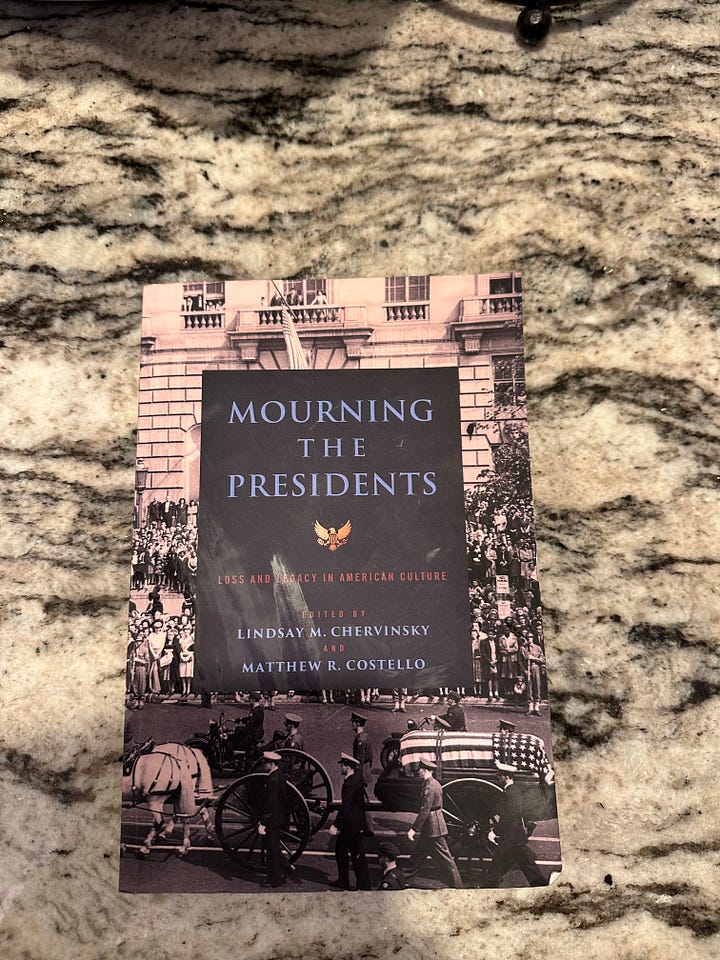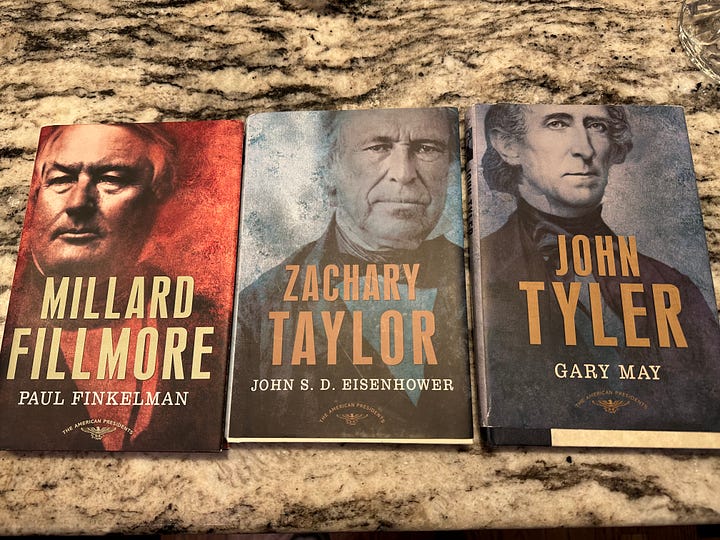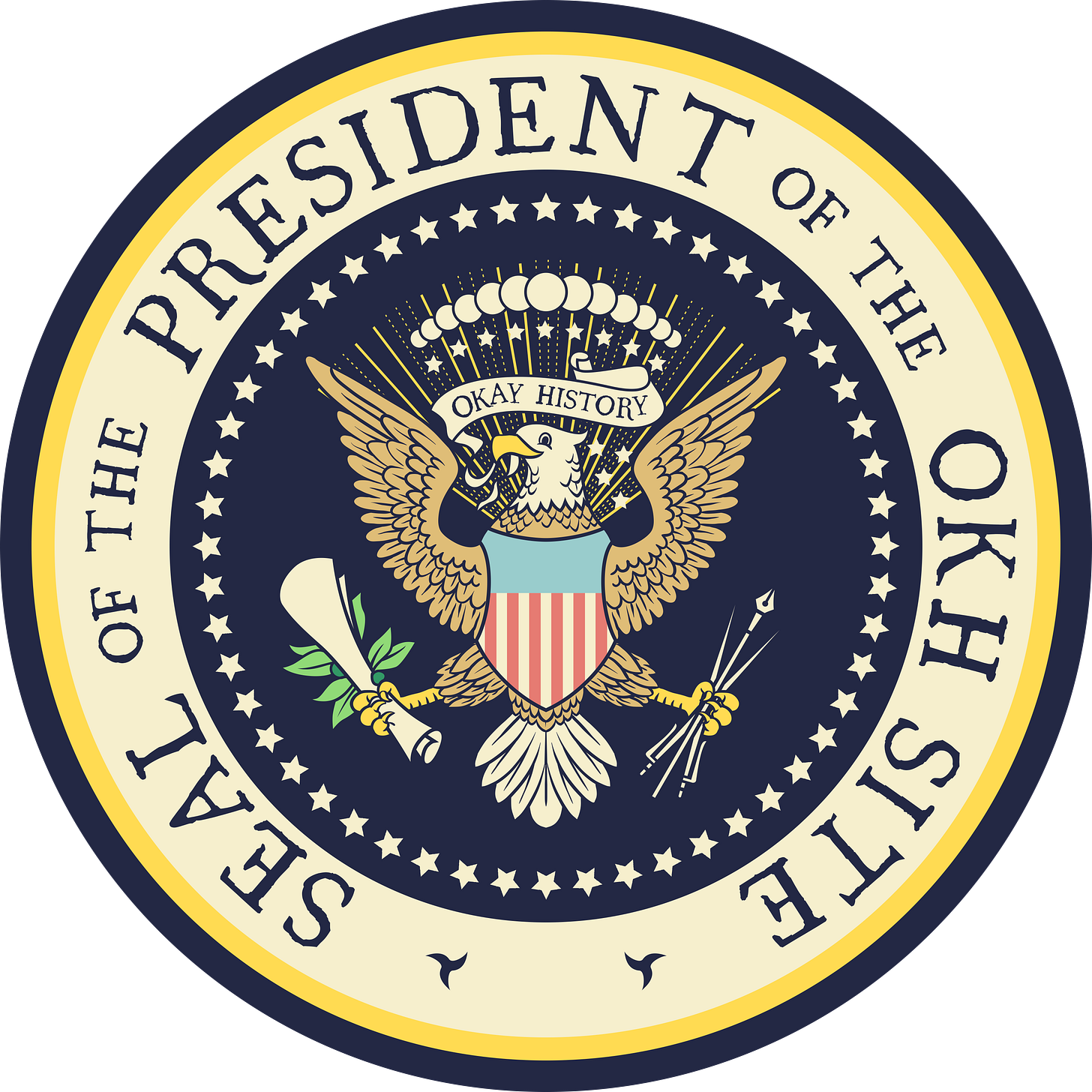Death Could Become Us
What it means when a president dies and the country’s fault lines are exposed.
Picture this: The president of the United States has unexpectedly died, and the nation is sharply divided. There is a fight between justice and injustice, freedom and oppression. But it’s never framed that way. Instead, it’s stated, “There are good people on both sides.”
The vice president was an unexpected addition to the ticket. He was born into poverty, willed himself a proper education, rose through the military, and carved out a political career.
Meanwhile, in cities across the country, white men are kidnapping people of color off the street in broad daylight, with little to no resistance, no due process, and protected by a law passed by a Congress that does little to solve the divide, which will grow to the point where blood will be shed before the healing can begin.
Sounds like 2025.
But it’s also 1850.
Either way, it’s not great.
Today, rumors swirl about the sitting president’s impending death and what it might mean if JD Vance took over, circulating amid the rise of the next wave of fascism and the fall of institutions.
To understand just how fragile the presidential transition can be, let’s step back and examine how we have faced this situation before.
Old Rough and Dead
On July 9, 1850, Zachary Taylor, the 12th president of the United States, died from a stomach infection. Having too much fun from the 4th of July festivities that celebrated the placing of the cornerstone of the soon-to-be Washington Memorial, Taylor would become the second president to die in office, the first since President William Henry Harrison, who passed away nine years earlier.
Both Taylor and Harrison had short administrations: 16 months for “Old Rough and Ready,” while “Tippecanoe” was around for as long as an Adobe Reader free trial subscription. These war hero generals left most of their remaining time in the White House to their vice presidents, proper gentlemen, placed on the ticket to “balance” them out.
President Taylor’s death was a surprise, especially as the days unfolded. Washington, DC, was a crime-filled city in 1850. Excuse, not crime, grime – because the water system was disgusting. Everyone had stomach issues because everyone drank the water or ate things that the water had touched.
When Taylor finally succumbed, the moment would reveal the character of the man who replaced him, and the shift in policy would seal America’s fate toward war.
I Am the President
The fact that the country was saddled with President Millard Fillmore goes beyond basic sanitation.
We can thank what happened in 1841 for providing the precedent. Considering what we were dealing with, the transition from the 10th president to John Tyler was surprisingly seamless. Fletcher Wesbter, the son of Secretary of State Daniel Webster, along with a guy named Bob, who was the doorkeeper of the Senate, traveled 230 miles from Washington, DC, to Tyler’s farm in Williamsburg, VA. They woke him up and told him the president was dead. Since this situation was entirely new for a country only 50 years old, they handed the vice president a letter saying just that. Nobody knew what they were doing, but they knew enough to draft a memo.
Harrison’s cabinet made arrangements for his funeral, but neglected to ask Tyler to return to Washington. This was April 5, 1841, just one month after being inaugurated, and Tyler ditched DC immediately because he, as the vice president, had nothing else to do. Plus, his home was in Williamsburg, and there’s Busch Gardens there. You could probably drink the water and not die from an Alien Stomach Attack.
The next day, Tyler traveled back to DC, met with President Harrison’s cabinet, and explained he wasn’t going to act like the president; he had now become the president of the United States. Presumably, these guys all knew about the Transfiguration of Jesus, so they must have seen Tyler standing next to George Washington and Thomas Jefferson on either side because they all capitulated on the spot.
What else could they do? Remember the 12th Amendment? It only fixed the idea that the president and vice president would be elected on the same ballot. Article II, Section I of the Constitution says that in the event of removing the president or on his death, the Vice President shall act as the president.
But what does that mean? John Tyler had the answer.
Cabinet members told Tyler that with President Harrison, everything was voted on by committee. Newly self-anointed President Tyler said, "Thanks, but President Harrison is dead, and so is that idea."
To show everyone he wasn’t a terrible guy, Tyler agreed to the suggestion that he swear an oath to the Constitution. And that’s why we do it to this day.
Even though the rules weren’t clear, the republic survived because one man decided how things worked. It didn’t matter if he was liked. What mattered was keeping this idea of America together.
Please Like Me
When news of President Taylor’s death reached Vice President Millard Fillmore, they didn’t need to travel as far because Fillmore was down the street, presiding over a Senate that had just voted to censure Taylor for a messy scandal that maybe one day I’ll rank and write about.
Fillmore was an unknown politician, another “outsider” like Taylor, who never served in office until elected president. Millard served six years in the House, but that ended when he was appointed the comptroller of the state of New York, which at the time was a bigger deal. By the 1848 presidential election, the Whig Party needed a northerner to help balance the ticket from Taylor’s southern roots. Fillmore somehow landed the gig of vice president due to his perceived support of Whig Party bigshot Henry Clay.
After swearing in and becoming president, Fillmore set the tone by exposing his entrenched insecurities and determination to chart his own course. Whereas Tyler kept most of Harrison’s cabinet throughout his administration, Fillmore fired everyone from Taylor’s. He requested that they stay on for 30 days so he could start a new administration. Each cabinet member told Fillmore to drink a tall glass of Washington, DC, water.
Millard now led a country trying to come to terms with the expansion of slavery while dealing with states that banned it and states that considered it an essential institution. Since Taylor never kept Fillmore in the loop on anything, Fillmore foolishly agreed to the Compromise of 1850, which was introduced by Clay earlier that year.
This was a break from Taylor’s position. Although he enslaved people, Taylor did not support the expansion. Fillmore, on the other hand, never enslaved people, but made it possible for slavery to expand, AND enhance the capture of freed people or perceived enslaved people in Northern states, despite their laws enhancing protections for such people, like due process. Thank you, Fugitive Slave Act.
None of this helped; the Civil War broke out eleven years later.
Stress Test
A presidential death is always a stress test. Don’t take for granted the idea that what could, God forbid, happen if Donald gets sent to that plush golden casino in the sky. JD Vance might assume the presidency, or there may be a cage match amongst cabinet members on the White House lawn to determine who takes power.
But the test will come again. The question is whether our leaders and institutions are strong enough to pass.
Thank you all for taking the survey – I’m going to ask one last time (this week at least) if you wouldn’t mind filling it out. I’d like to give you an incentive, but since I don’t know how to verify anything that involves a survey, you’ll just have to accept the gift of my gratitude – which is incredibly valuable.
With the survey in mind, this essay on presidential history is taken from the survey as a request. Anyone who knows me knows that my endearing quality is doing what I am told. So, if you want me to do something – like another edition of Ask Me Anything, you’re going to have to step up and ask me something! Thank you again for considering.
If you enjoyed this essay, please click the❤️ to help it stand out. I’d also appreciate it if you would subscribe - free or paid – to support my work.
You can also help reach new readers by sharing it on social media.
Have a great weekend. I’ll see you back on Monday for the wildly popular and free edition of the Maundy Monday Newsletter.
Appreciate you and your support of Okay History!
Okay,
Chris






